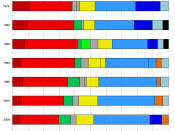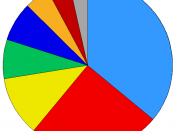Republic of Poland (Rzeczpospolita Polska) was the first country in Central and Eastern Europe to break out of communist rule, which lead to the creation of the president as head of state and a second chamber of parliament, the senate.
Although at present Poland is a sovereign and democratic country whose institutions operate under the rule of law, there are still signs of the old systems in place, hence the possibility for it to have a totalitarian state that is hostile to collectivism and in which some degree of individualism - particularly in the economic sphere - is encouraged. (Hill C, 2003)
Poland is one of the largest countries in Central Europe; its shape is roughly square, measuring 400 - 440 miles across (http://www.kprm.gov.pl). The climate is temperate, characterised by relatively cold winters and warm summers, ideal for the large scale of agricultural farming undertaken in the country.
Before its acceptance into the European Union (EU), Poland will have to overcome some of the problems that currently exist in its agricultural sector, which employs over 19% of the workforce.
(Kapoor M & Johnstone C, The Business 13 / 14 October) At present Poland is a country of peasant farmers that are handicapped by structural problems and inefficient small farms, as well as no-hope heavy industry and high unemployment.
Farmland occupies 18.5 million hectares; almost 60 % of land in Poland and 91.2 % of farmland is in private hands. (See Figure 1, pg 7) This is a relatively high share of land compared with other candidate Countries, (countries that are presently in negotiations to join the EU) and current EU member states.
Figure 2: Land use in 2001.
Figure 3: % of workforce employed in farming.
Poland will have the second highest employment in agriculture in the EU-27...


